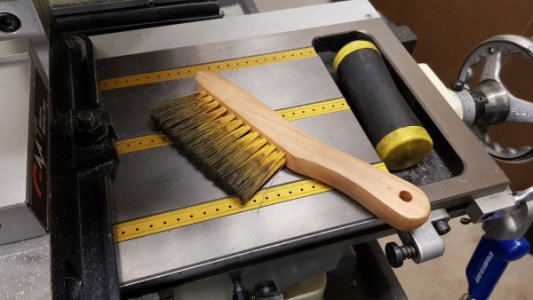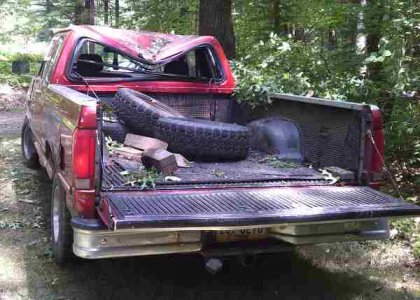- Joined
- Jan 3, 2013
- Messages
- 192
Recently I happened to run across an interesting article on Corrosion of Metals by Wood (the article s from the National Physical Laboratory in England).
As a person who enjoys woodworking as well as metal working, I often make tool holders (as in for storing on a shelf or in a drawer) out of wood. In addition, machine tools are frequently packed in wood storage boxes (still happens, though plastic is becoming more common). But the article above made me wonder if this is a good idea or not.
The article is primarily directed at the use of wood for shipping and warehousing containers, but I think it has some application to the shop as well.
A few excerpts from the article:
As a person who enjoys woodworking as well as metal working, I often make tool holders (as in for storing on a shelf or in a drawer) out of wood. In addition, machine tools are frequently packed in wood storage boxes (still happens, though plastic is becoming more common). But the article above made me wonder if this is a good idea or not.
The article is primarily directed at the use of wood for shipping and warehousing containers, but I think it has some application to the shop as well.
A few excerpts from the article:
- Wood is a corrosive substance by nature, and can be made more corrosive by treatment given to it. Unlike most other corrosive substances, one of the corrosive chemicals in it, acetic acid, is volatile, and in an ill-ventilated space, wood can cause corrosion of metal nearby but not actually in contact.
- Kiln drying accelerates the production of free acetic acid in wood, but most of the acid does not have time to escape. Kiln dried wood is more acid and more immediately corrosive than air dried wood, though it contains less combined acid that can be set free in later years.
- Different woods have different acid content, some examples from a longer list:
- Oak - high
- Birch - fairly high
- Spruce/elm - moderate
- Unfortunately, no determinations have been made of the actual concentrations of acetic acid vapour inside wooden boxes, but it is clear that corrosion is caused by only very small quantities.
- . . . even with well dried wood, a corroding humidity can be reached easily in a temperate climate, and all the time in a tropical one. If the wood becomes wetted, corrosive conditions can develop at any temperature, and be very severe at higher temperatures.
- Avoid fresh wood. Avoid kiln dried wood. Avoid damp wood. Keep wood in a dry atmosphere for as long as possible before use.
- The emission of acetic acid vapour from wood is retarded, but not stopped, by paint or lacquer applied to the wood. It must not be forgotten, however, that . . . paints . . . themselves emit corrosion vapours (formic and acetic acids). Choice of coating . . . preferably acrylics and two-pack epoxides and polyurethanes.






